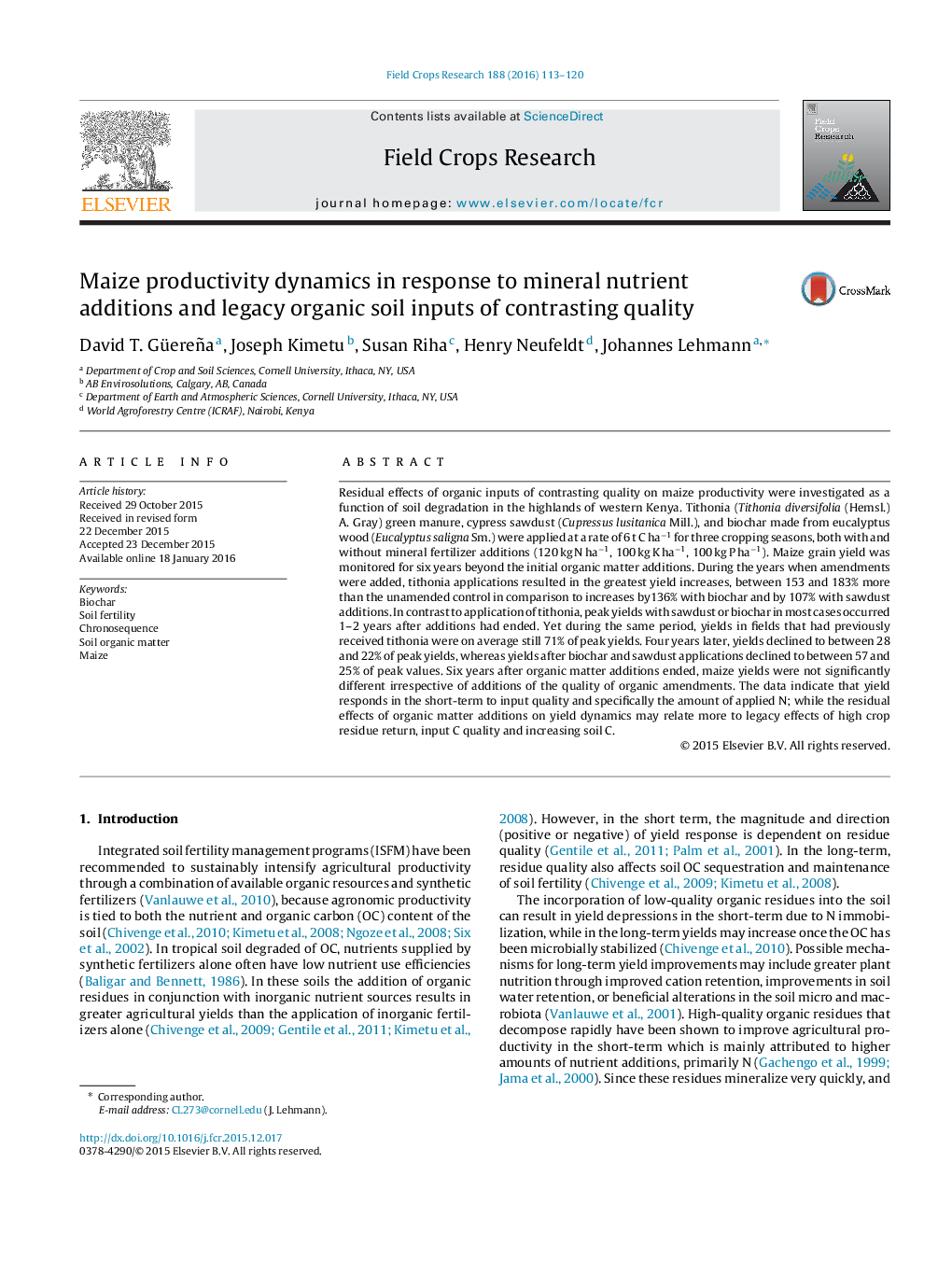| کد مقاله | کد نشریه | سال انتشار | مقاله انگلیسی | نسخه تمام متن |
|---|---|---|---|---|
| 4509852 | 1624675 | 2016 | 8 صفحه PDF | دانلود رایگان |
• Greatest maize yield responses from high quality organic amendments.
• Yield responses were greatest in the old conversion soils.
• No differences in young conversion soils.
• Maize yields only significantly responded to fertilizer 10 years after conversion.
• Amendments not sufficient to prevent degradation, but necessary to aggrade soil.
Residual effects of organic inputs of contrasting quality on maize productivity were investigated as a function of soil degradation in the highlands of western Kenya. Tithonia (Tithonia diversifolia (Hemsl.) A. Gray) green manure, cypress sawdust (Cupressus lusitanica Mill.), and biochar made from eucalyptus wood (Eucalyptus saligna Sm.) were applied at a rate of 6 t C ha−1 for three cropping seasons, both with and without mineral fertilizer additions (120 kg N ha−1, 100 kg K ha−1, 100 kg P ha−1). Maize grain yield was monitored for six years beyond the initial organic matter additions. During the years when amendments were added, tithonia applications resulted in the greatest yield increases, between 153 and 183% more than the unamended control in comparison to increases by136% with biochar and by 107% with sawdust additions. In contrast to application of tithonia, peak yields with sawdust or biochar in most cases occurred 1–2 years after additions had ended. Yet during the same period, yields in fields that had previously received tithonia were on average still 71% of peak yields. Four years later, yields declined to between 28 and 22% of peak yields, whereas yields after biochar and sawdust applications declined to between 57 and 25% of peak values. Six years after organic matter additions ended, maize yields were not significantly different irrespective of additions of the quality of organic amendments. The data indicate that yield responds in the short-term to input quality and specifically the amount of applied N; while the residual effects of organic matter additions on yield dynamics may relate more to legacy effects of high crop residue return, input C quality and increasing soil C.
Journal: Field Crops Research - Volume 188, 1 March 2016, Pages 113–120
